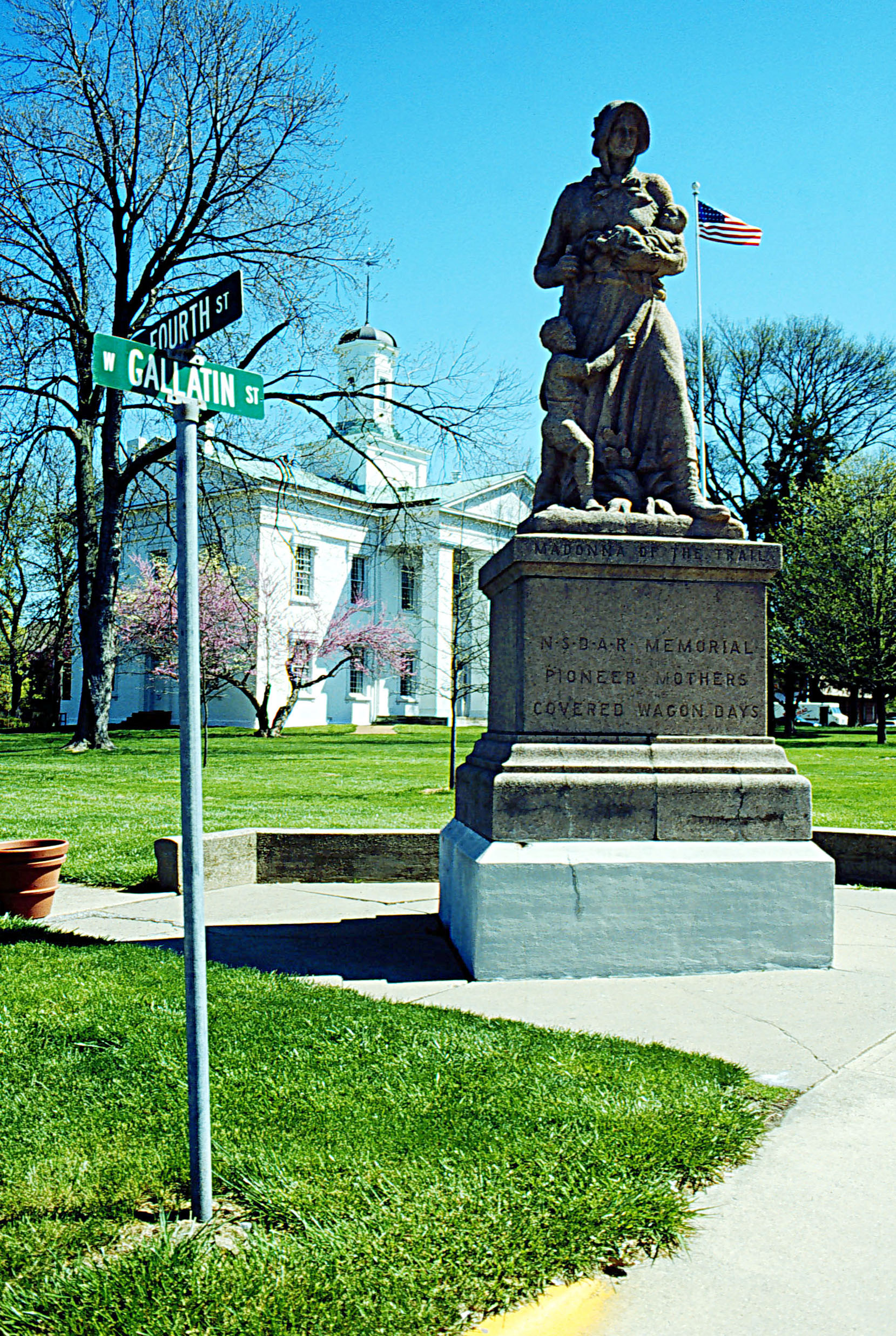- Vandalia State House State Historic Site (Illinois)
Infobox_nrhp | name = Vandalia Statehouse

caption = |Madonna of the Trail statue in front of the Vandalia State House.
locator_x =
locator_y =
location = Vandalia,Fayette County, Illinois , USA
nearest_city =
lat_degrees = 38
lat_minutes = 58
lat_seconds = 5
lat_direction = N
long_degrees = 89
long_minutes = 6
long_seconds = 7
long_direction = W
built = 1836
added =January 21 ,1974 [ [http://www.nr.nps.gov/iwisapi/explorer.dll?IWS_SCHEMA=NRIS1&IWS_LOGIN=1&IWS_REPORT=100000066 NRIS Database] , National Register of Historic Places, retrieved Jan 2007.]
governing_body = State of IllinoisThe Vandalia State House State Historic Site, built in 1836, is the fourth capitol building of theU.S. state ofIllinois . It is also the oldest capitol building in Illinois to survive, as the first, second, and third capitol buildings have all disappeared. The brickFederal style state house has been operated by the state of Illinois as a monument of Illinois pioneer years since 1933. It is located inVandalia, Illinois , on theNational Road .Earlier capitols
The Vandalia State House, Illinois's fourth capitol, was built when Illinois was in its eighteenth year as a state. Admitted to the Union in 1818, Illinois quickly abandoned its first governmental center of
Kaskaskia, Illinois , and its capitol building (active in 1818-1820). A second "state house" was built of lumber at the new capital of Vandalia, but it burned to the ground after only three years (1820-1823).The third capitol building (1824-1836), also built in Vandalia, was the scene of most of the service of
Abraham Lincoln as a member of the Illinois state legislature. Lincoln did not, however, become a beloved figure in Vandalia. Elected fromSangamon County , closer to thegeographic center of Illinois, Lincoln led a central Illinoiscaucus that called for the state government to move itself to the growing town ofSpringfield, Illinois .As a result of this threat, Vandalia businessmen took action. In 1836, when the legislature was in
recess , they abruptly tore down the third Capitol building and built a larger fourth one on the same public square. The cost of the new brick building was $16,000. Vandalia hoped that the new Vandalia State House would be so nice to work in that it would encourage the state government to remain in town.Later capitols
When Lincoln and his colleagues returned to Vandalia in the fall of 1836, they saw a new "State House" waiting for them. They were not impressed. In February 1837, the legislature, under pressure from Lincoln and his colleagues, moved the governmental center to Springfield.
The fifth Illinois capitol, a Springfield building now called the
Old State Capitol State Historic Site , served that purpose in 1839-1876. It was then replaced by the sixth and finalIllinois State Capitol , which was occupied in 1876 and continues in operation today.Vandalia State House
The state of Illinois gave the Vandalia State House (in operation in 1836-1839, only three years) to Vandalia's county, Fayette County, for use as the county
courthouse . Fayette County taxpayers paid to build the handsomeportico es added to the courthouse in the late 1850s, which made the building a structure in theGreek Revival style. The courthouse served the people of Fayette County in 1839-1933, when it reverted to the state.In 1933, the old courthouse became the Vandalia State House State Memorial, and an extensive program of interior refitting and reconstruction began. In 1985 the building became a Historic Site within the new
Illinois Historic Preservation Agency (IHPA). The IHPA maintains the old state house and interprets it to its brief time as Illinois's fourth capitol building in 1836-39.Notes
External links
* [http://www.state.il.us/HPA/hs/Vandalia.htm State of Illinois]
Wikimedia Foundation. 2010.
